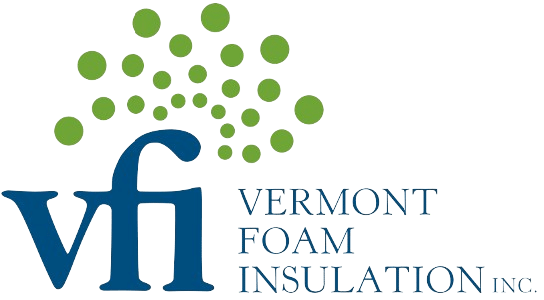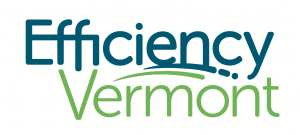It’s very easy to insulate a new home, but have you ever been curious if there is a way to insulate walls in existing homes, or other hard-to-reach spaces? Installing new insulation in an existing Southern Vermont or Southwestern NH property can be easy too, and can make a massive difference in reducing your energy bills and increasing your comfort.
In this blog we’ll provide an overview of the different types of insulation that can be installed in your home, delve into the different insulation installation processes, and explore which type of insulation works best for different areas of a house.
What Are the Common Types of Insulation?
Spray Foam Insulation
There are 3 kinds of spray foam appropriate for Vermont insulation needs: open cell, closed cell, and injection foam. The key benefits of spray foam insulation are strong thermal resistance (to keep outdoor temperatures out), air sealing (to keep your conditioned air in), and moisture resistance.
With less moisture in your home, you can spend less time worrying about mold growth and other related issues. This is why spray foam insulation is commonly used in weather-susceptible environments like basements, crawlspaces, and attics, and in insulating existing walls.
Mineral Wool & Fiberglass Batting
Mineral wool and fiberglass batting insulation offers soundproofing, air resistance, fire resistance, and more. These types of insulation are most commonly applied in interior and exterior walls, attics, basements, and in your garage. Each of these has various advantages against the other, depending on the circumstances! An experienced technician will know the best insulation types for your project.
Cellulose Insulation
Often made with recycled materials, cellulose insulation is a versatile choice for home insulation. This type of insulation is available in two forms: loose fill cellulose (typically installed in and around attics), and densely packed cellulose (which is blown into walls and under floors).
What Types of Insulation Go Where?
We mentioned where each of these types of insulation is typically found, now let’s explore why each variety is better suited for different parts of your home:
Blanket (Batt) Insulation
Aptly named, batt or blanket insulation is recognizable for its resemblance to a thick and very narrow blanket. This kind of insulation is primarily used inside unfinished walls, and its width is sized to be easily installed between joists and studs.
Blown-in Insulation
Blown-in insulation is an easy solution for the crevices where blanket insulation doesn’t fit, or would be impossible to install without destroying your home’s walls, floors, etc. Blown-in insulation comes loose in bags and requires a blower machine and some other equipment to install properly. This kind of insulation is a terrific option to add insulation to wall cavities in existing homes.
R-value Differences
Insulation is rated for effectiveness with r-values. These refer to an insulation’s effectiveness at preventing heat from entering or escaping your home per inch of thickness. Typically, r-values will correlate to cost as well, as more energy efficient products with a higher r-value will cost more for the value they provide.
Here’s an approximate guide to r-values by insulation type:
-
Blown-in fiberglass insulation: 2.2 to 2.7 per inch
-
Blown-in cellulose insulation: 3.2 and 3.8 per inch
-
Standard fiberglass batts: 2.9 and 3.8 per inch
-
High-performance fiberglass batts: 3.7 and 4.3 per inch
VT & NH’s Premier Insulation Contractor
Still feeling unsure about which types of insulation would be best for your next home insulation project? Your insulation contractors will be able to assess how best to use the variety of densities and materials available to make your home super comfortable and efficient.
At Vermont Foam Insulation, we work hard to make adding insulation to your new or older home a breeze. With our professional installation experience and range of insulation options, your home will join the ranks of hundreds of satisfied homeowners in the southern Vermont and New Hampshire area.








